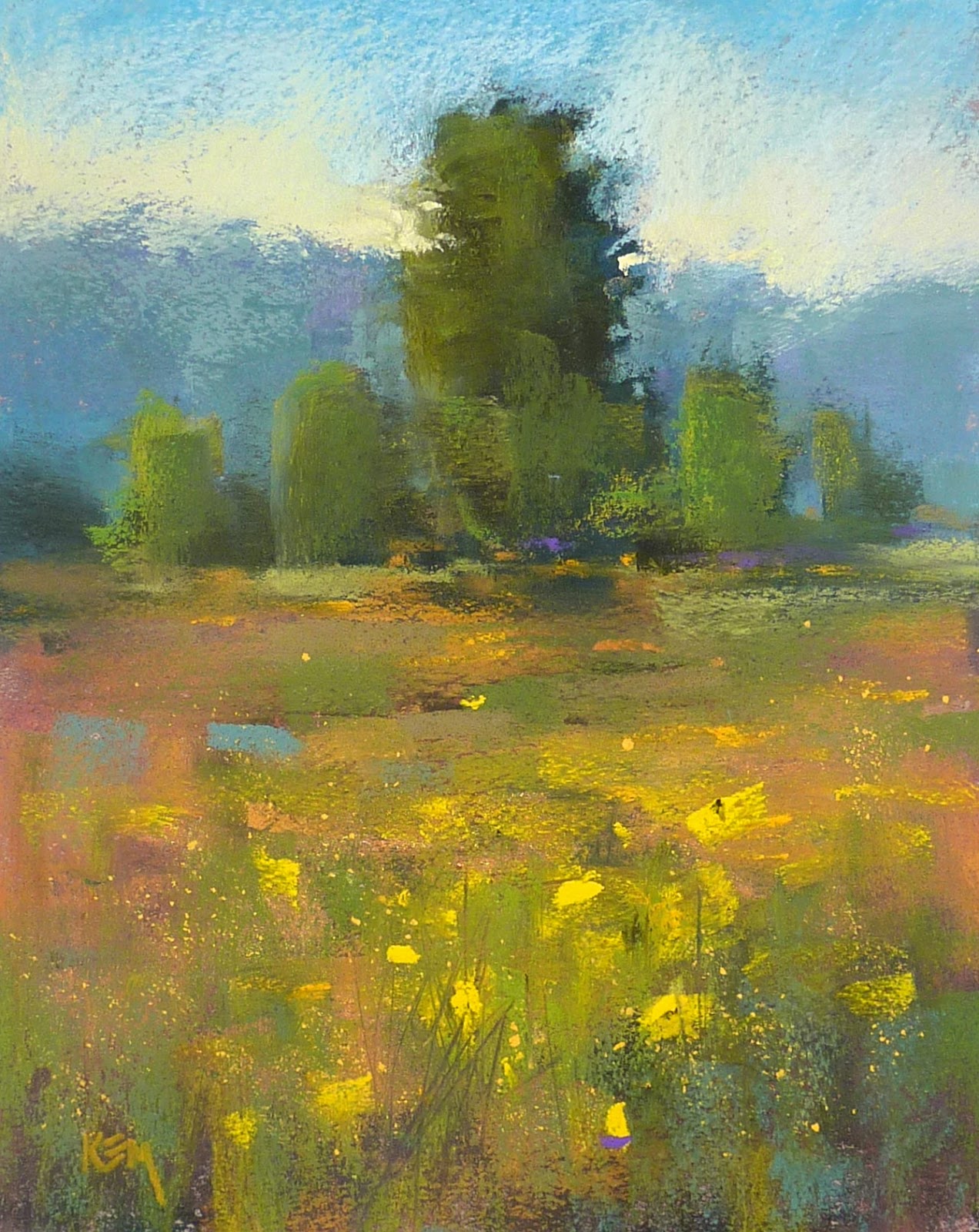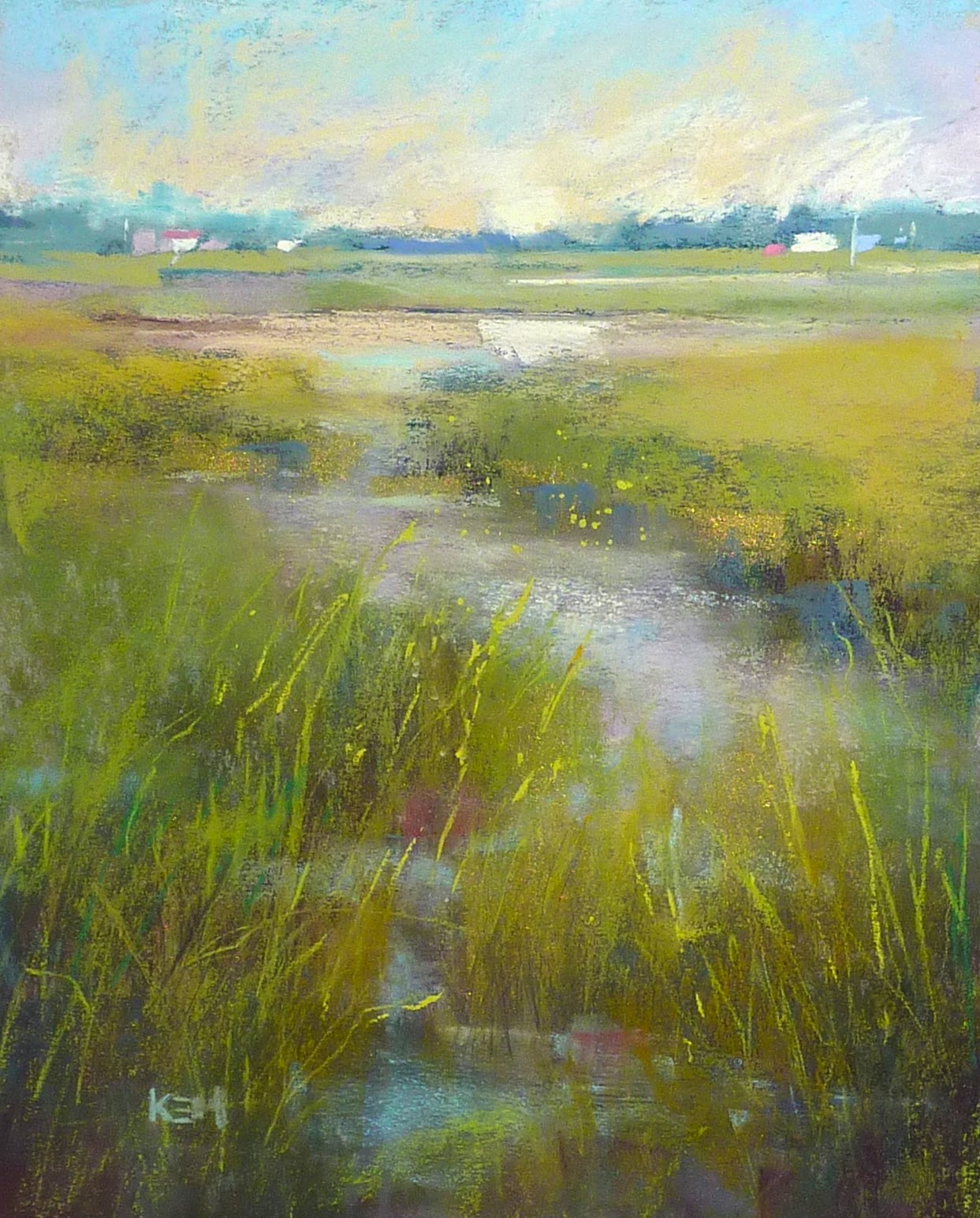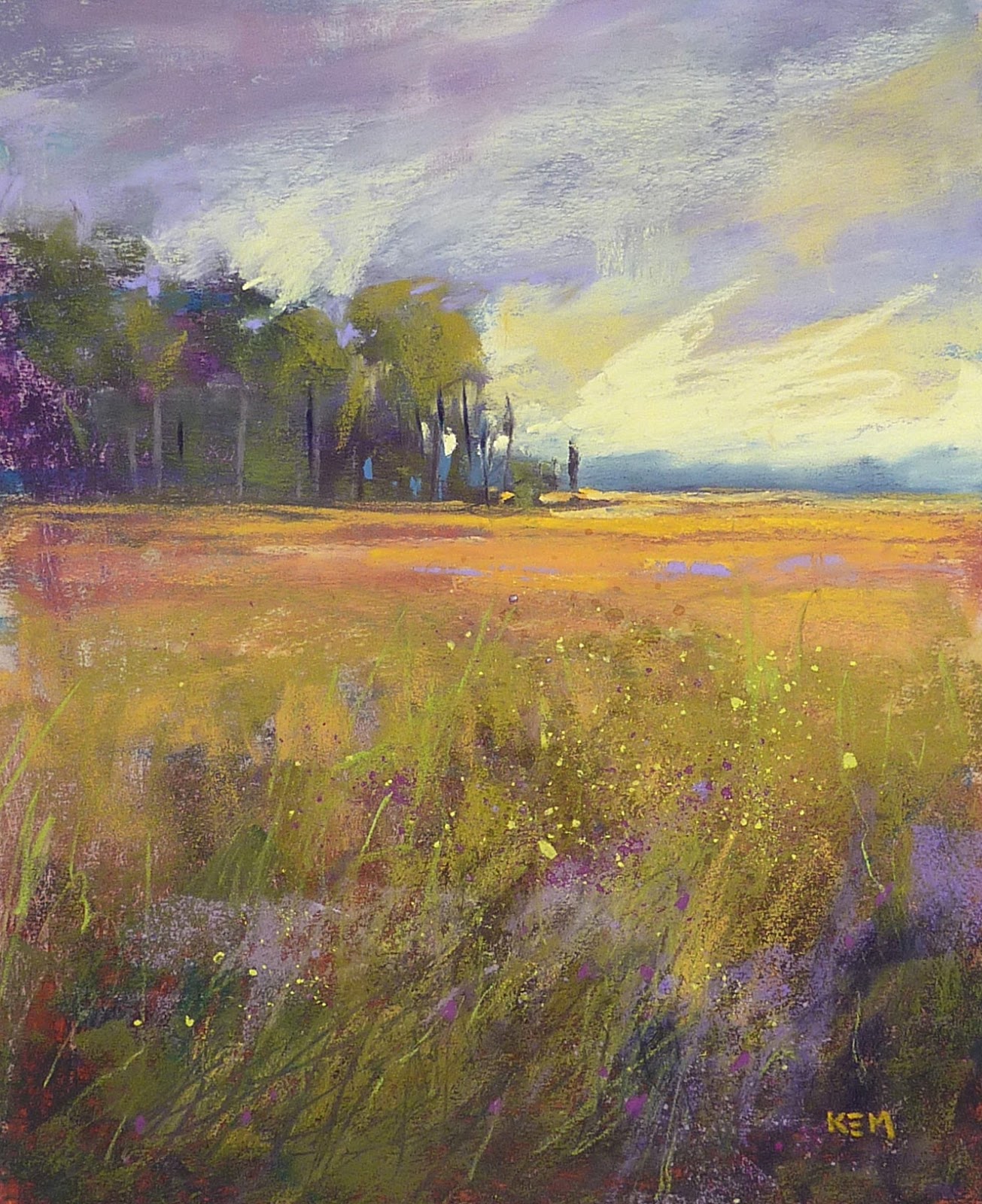| 'A Bird's Eye View' 6x6 pastel ©Karen Margulis click here to purchase in my Etsy store $45 |
Sometimes I feel like a mad artist in my studio. I furiously go from one project to the next. I have several paintings going at once and ideas for many more on the back burner. There aren't enough hours in the day to do all that I dream about.
So it seems a bit mad to add yet another project to my day but this is one I can't resist. I am calling it March Madness. It is a challenge I put together for one of my private students who needed a gentle nudge to get in the studio to paint more. It sounded fun so I will be joining her.
The idea is to choose a very simple subject such as a pear or a sunflower. I am choosing a nest in anticipation of spring and the arrival of my grandbaby Greta. (she is due March 11). For the month of March we will paint our simple subject as many times as we can. Every day if possible. It doesn't matter what medium or what size.....in fact it will be more fun to mix it up and try new ways to interpret the subject. I began with two pastel nests but who knows what the rest of the month may bring!
| 'New' 6x6 pastel click here to purchase $45 |
I'll post my new nests here on the blog and on Instagram. If you are on Instagram I invite you to follow me! KarenMargulis
Both of today's nests are pastel on Strathmore Black Artagain paper.













